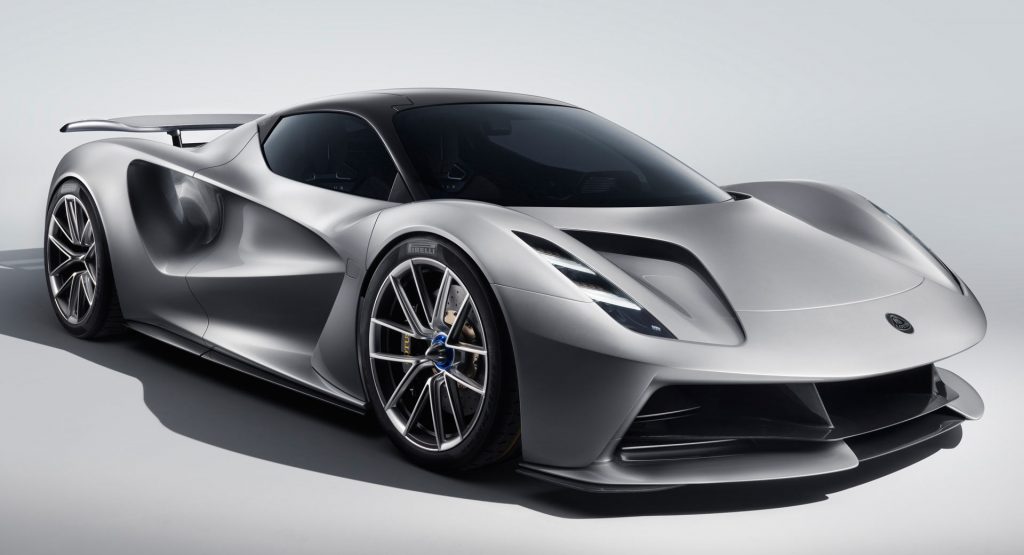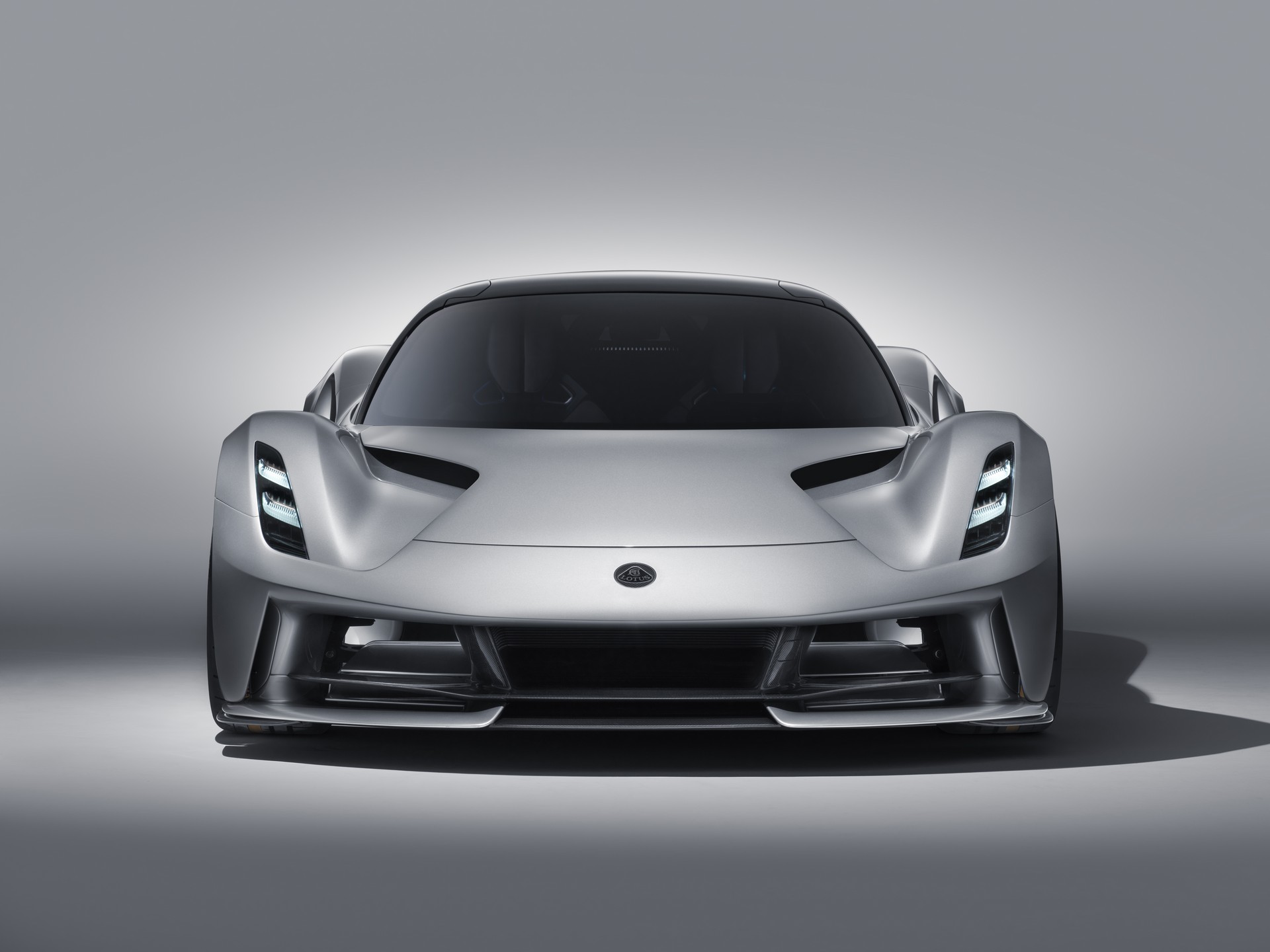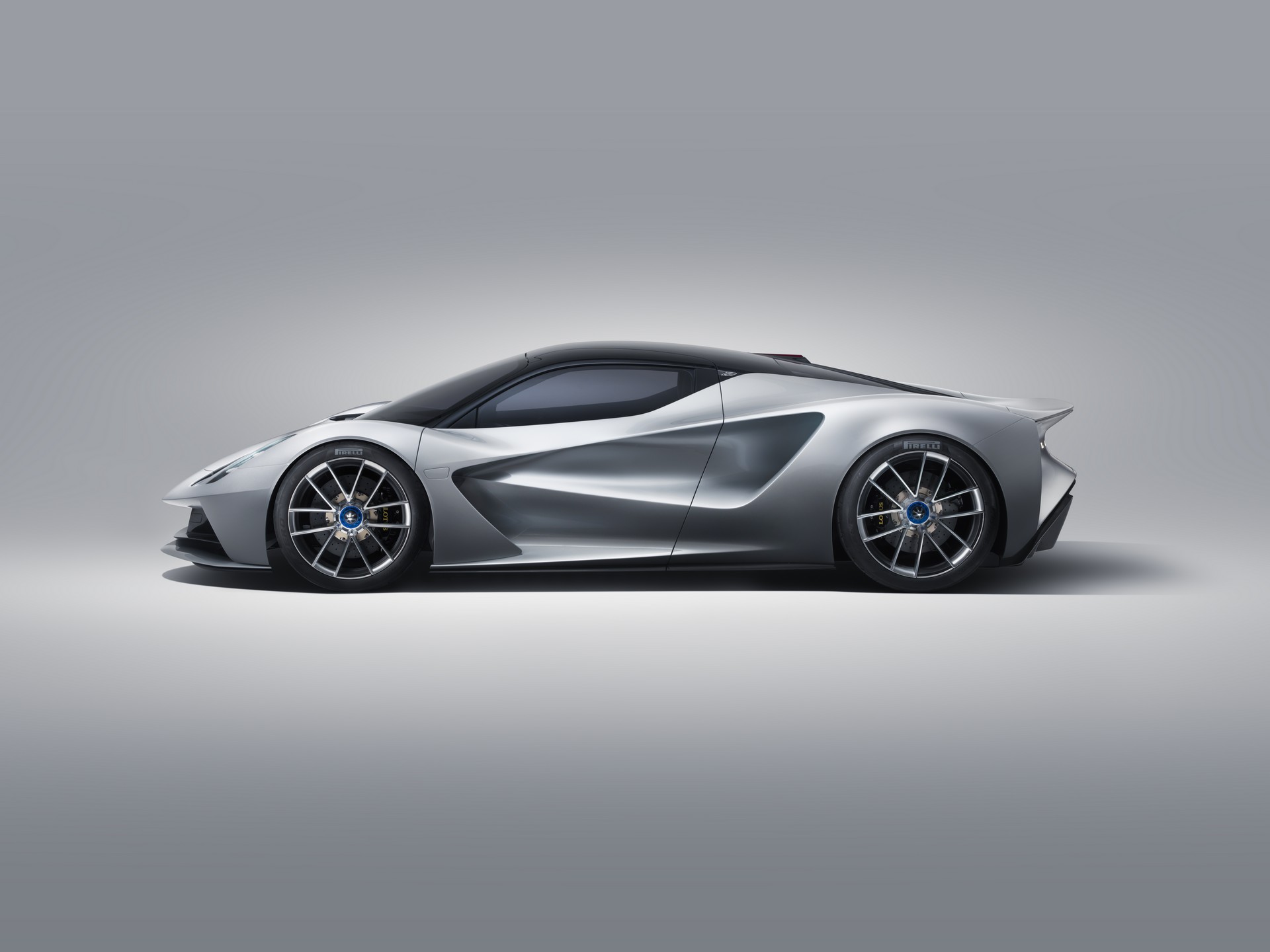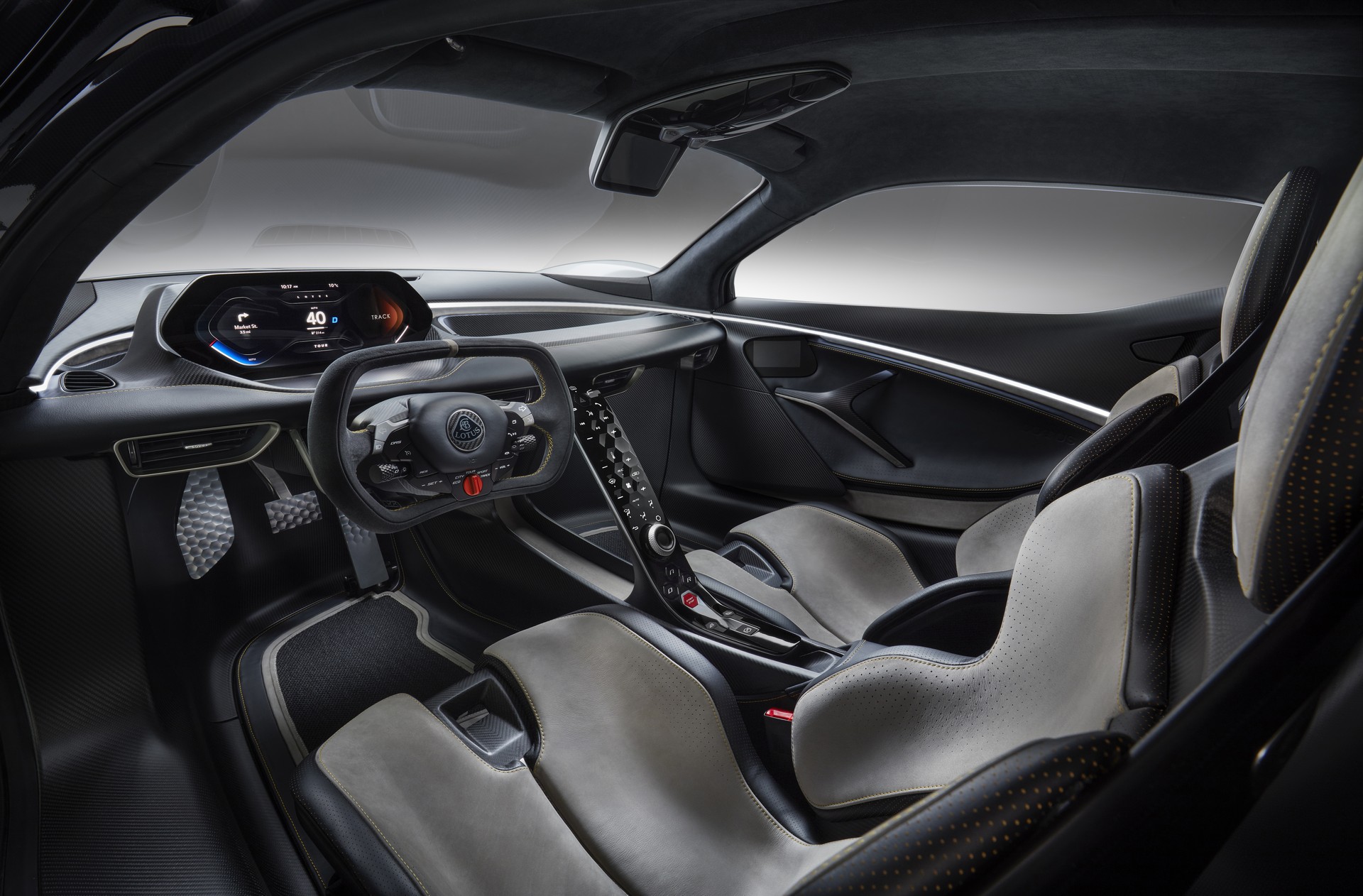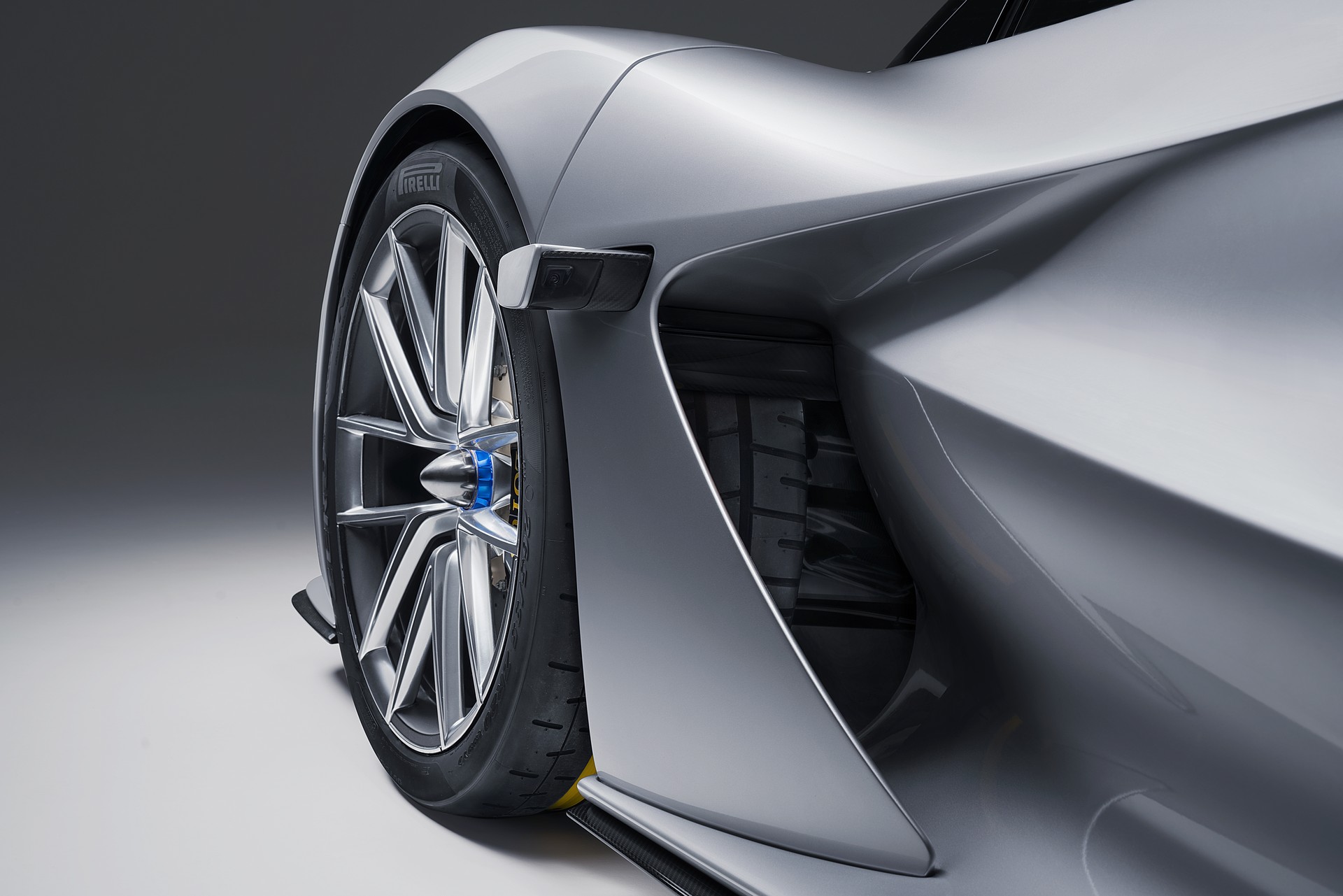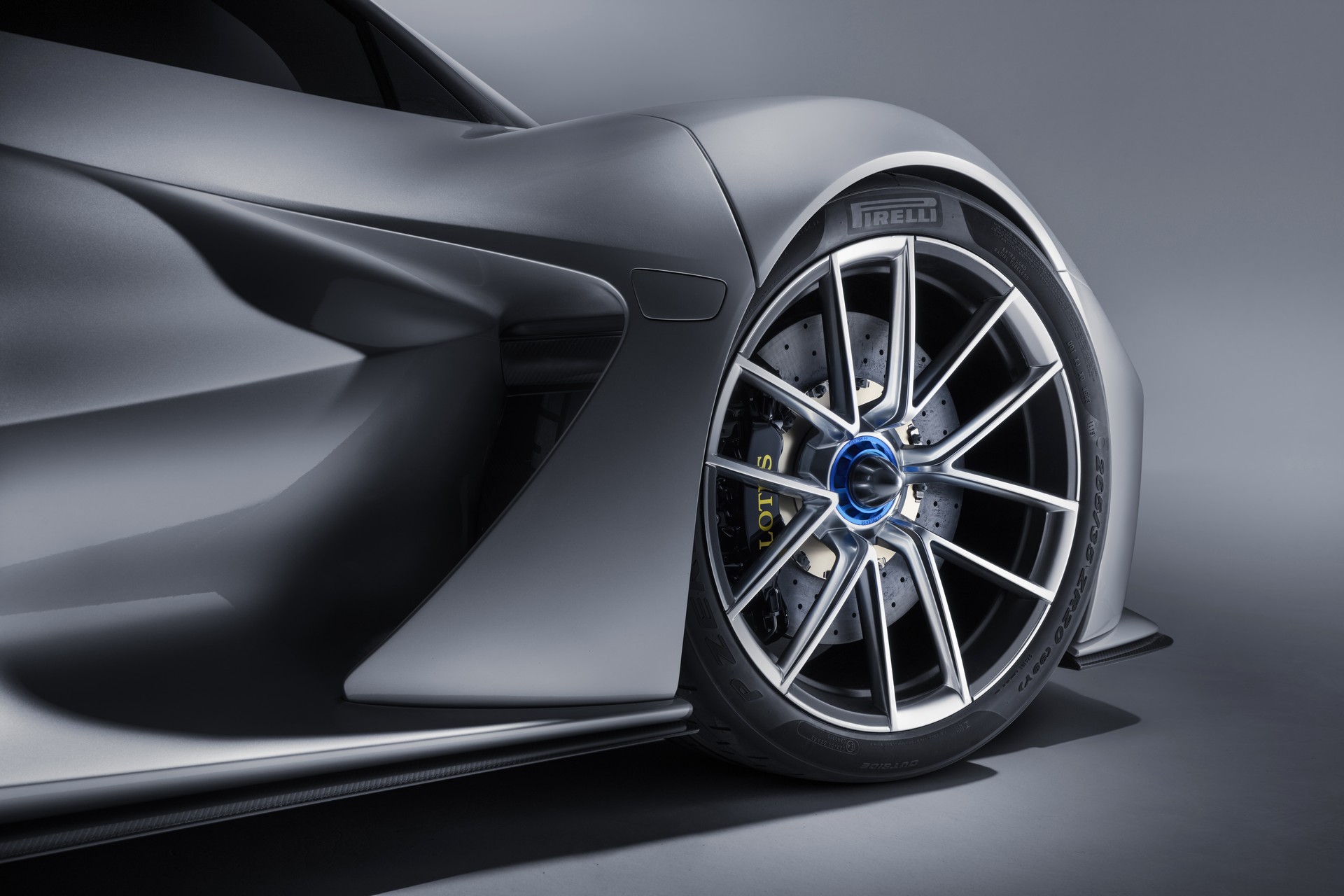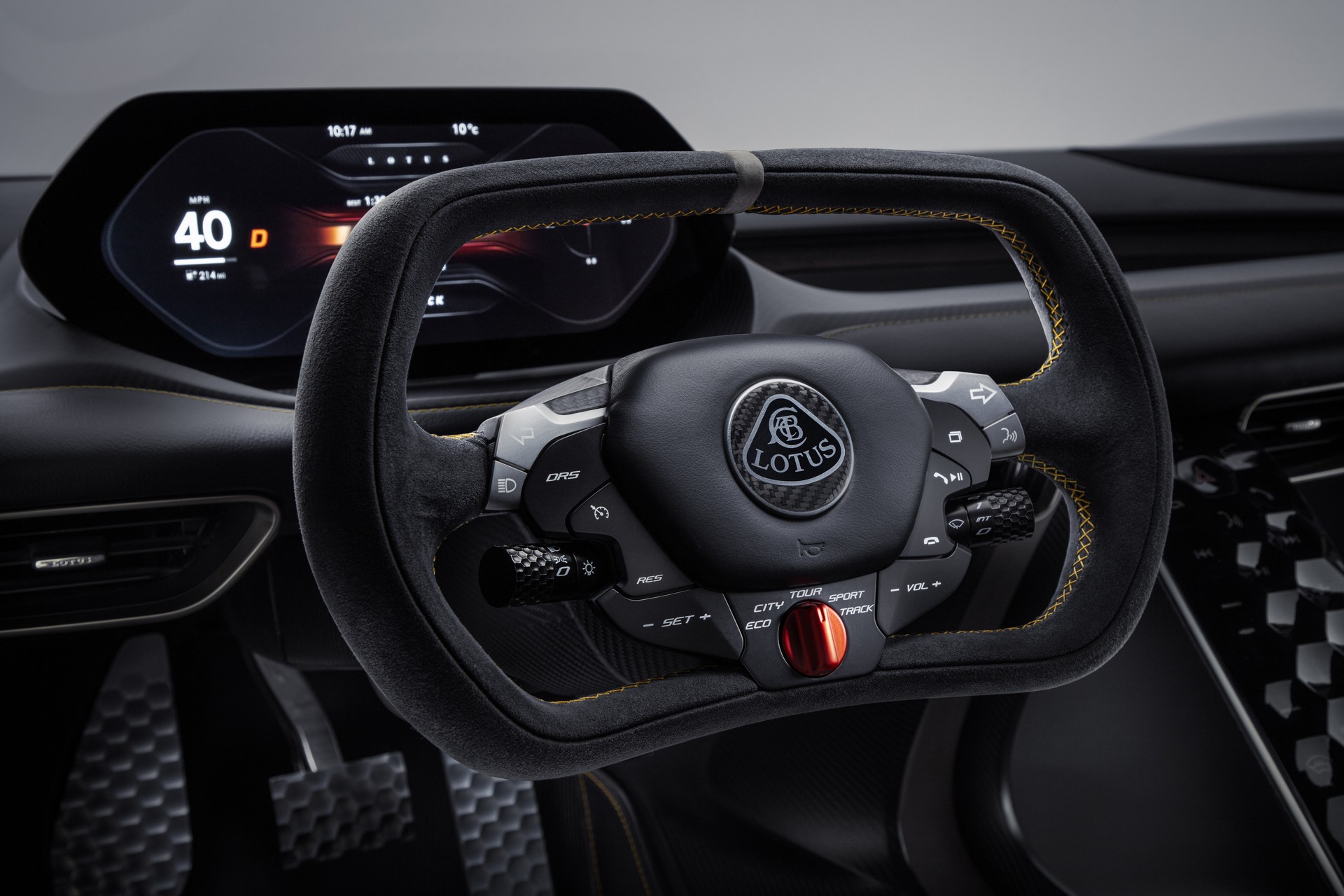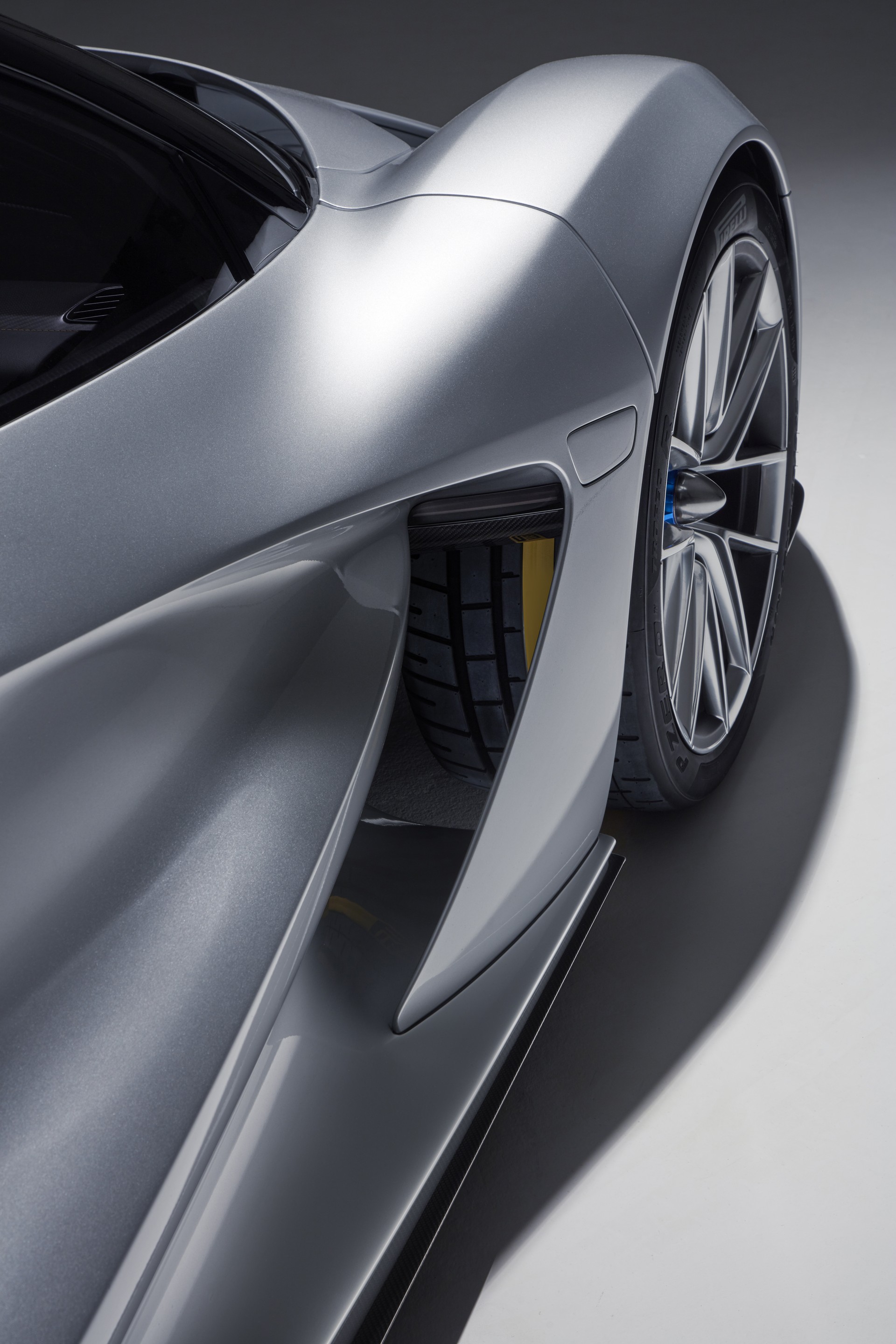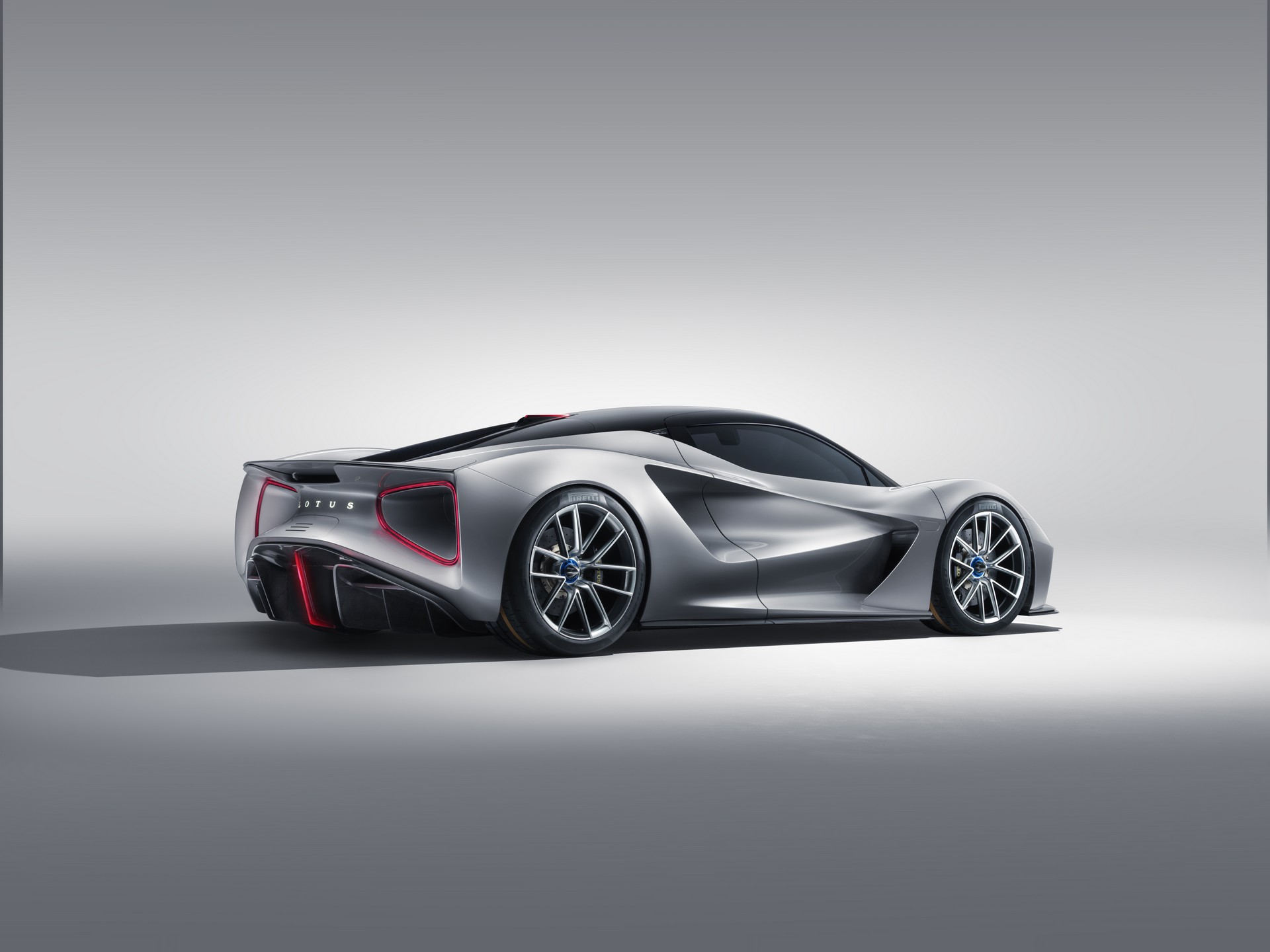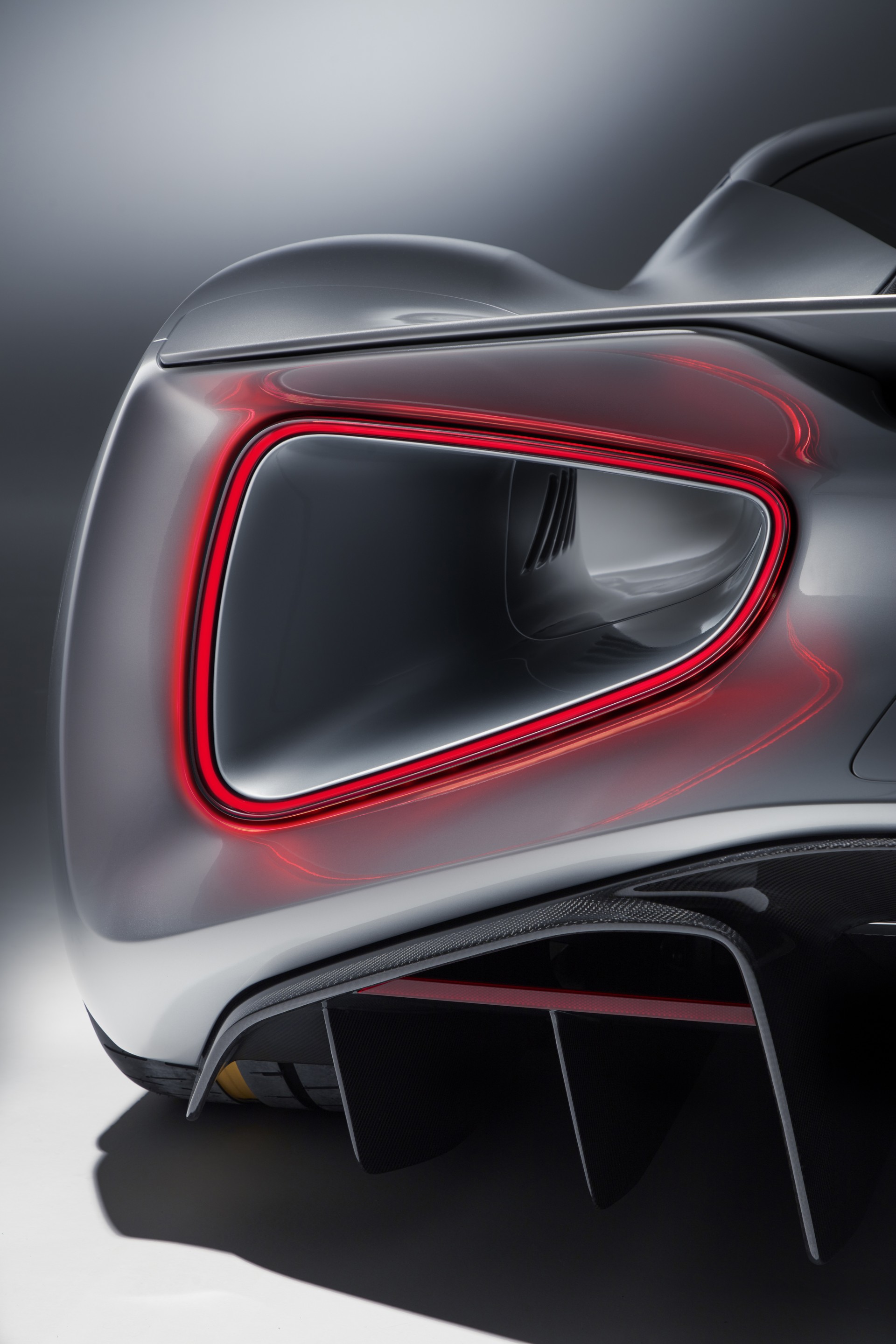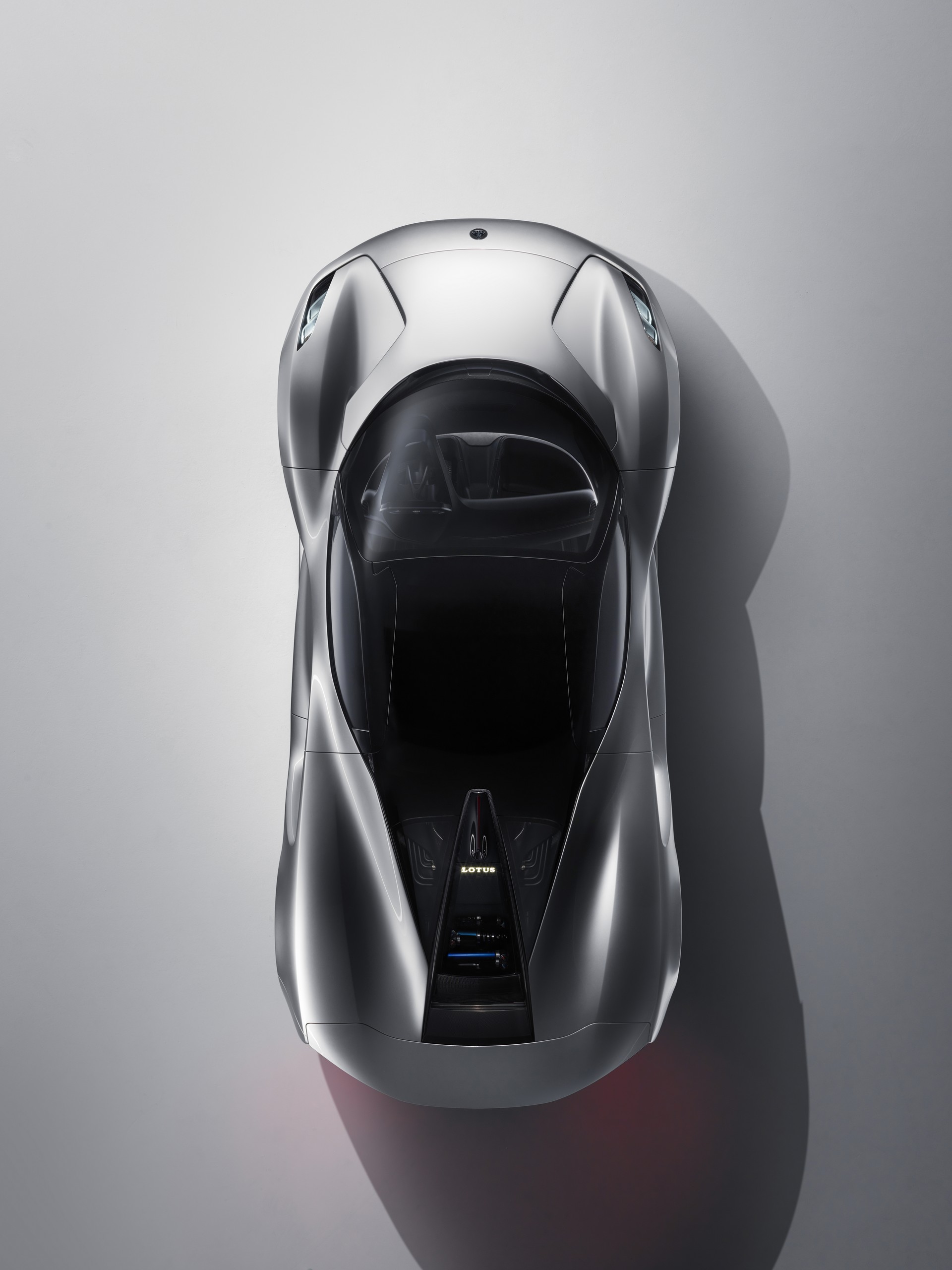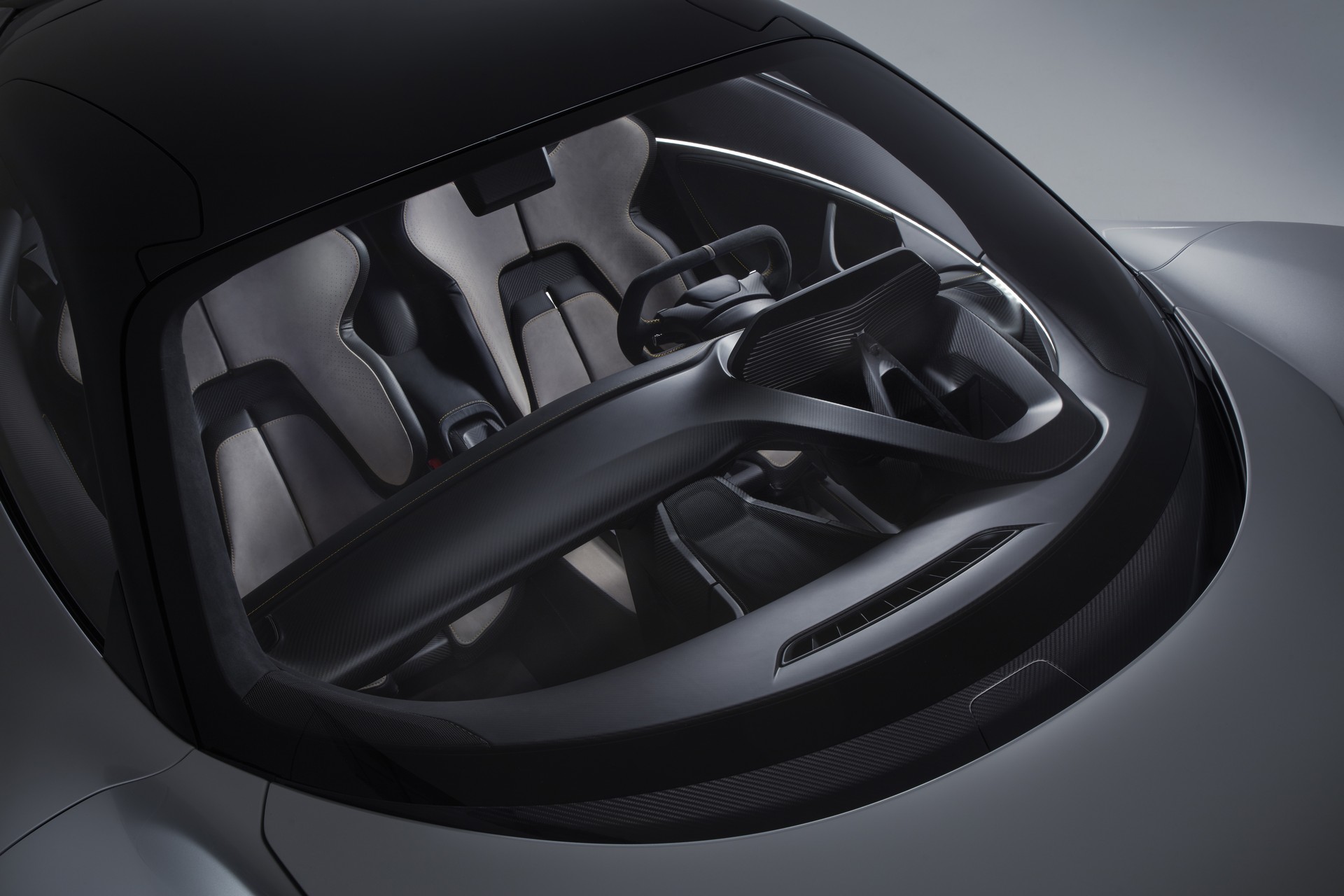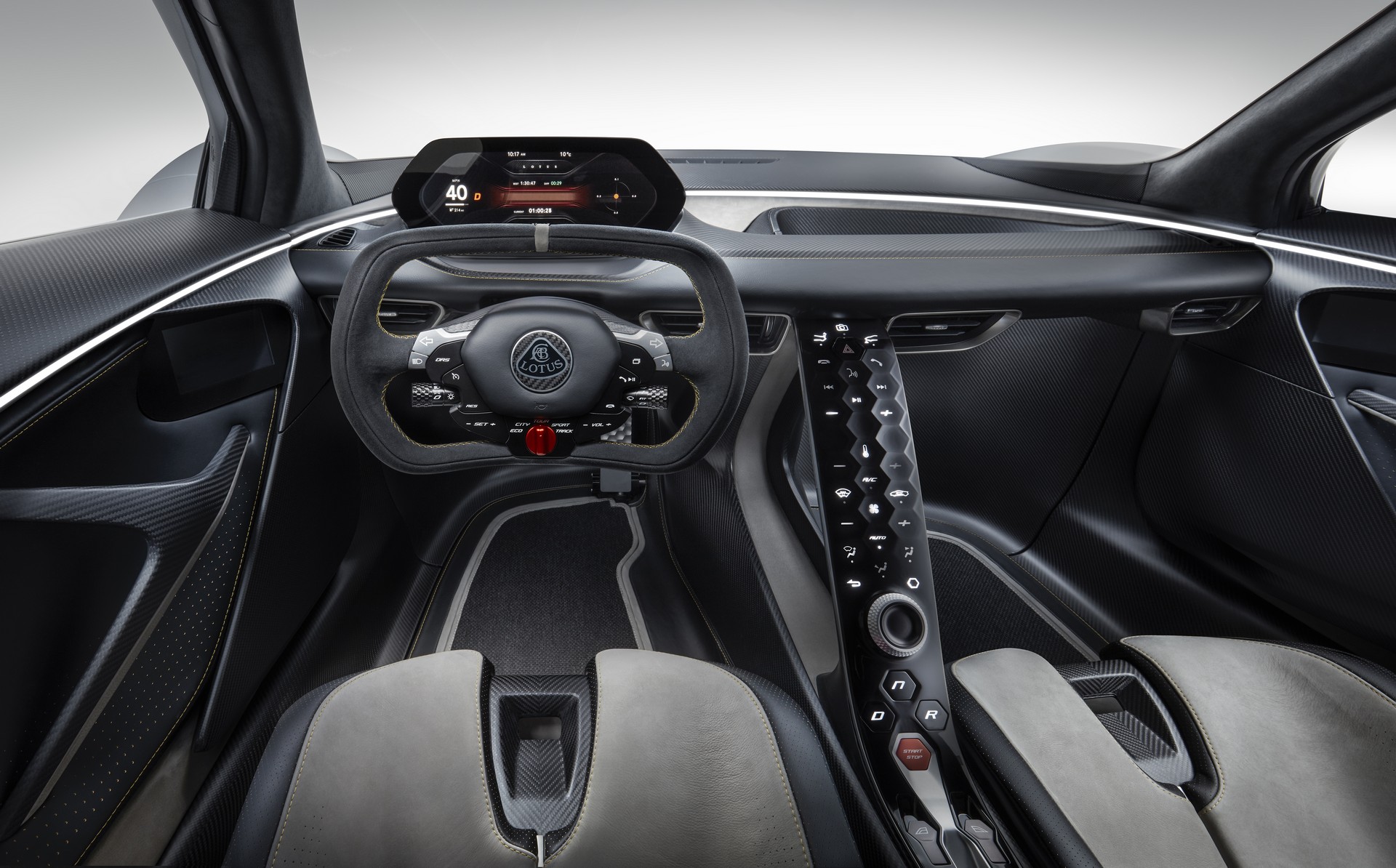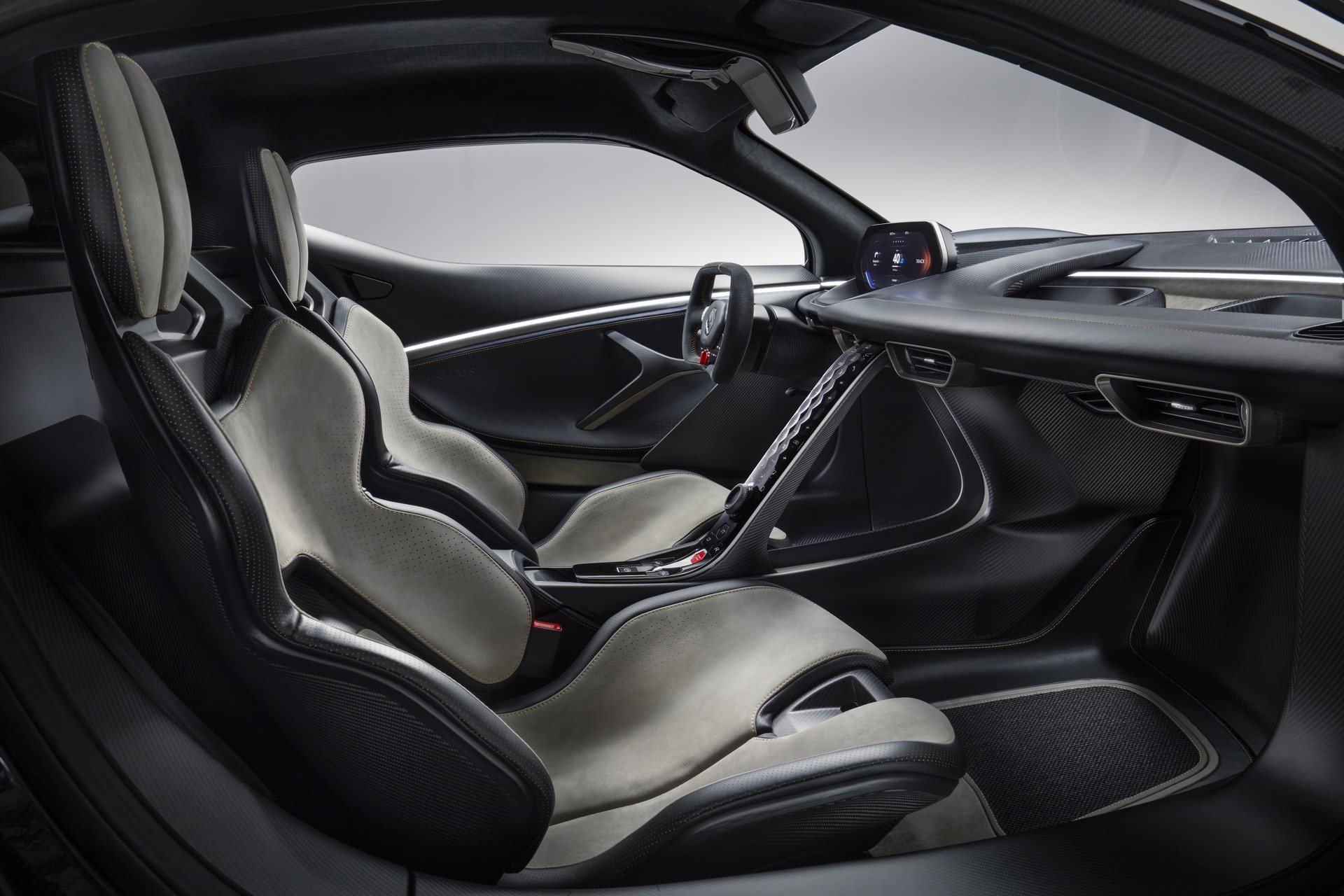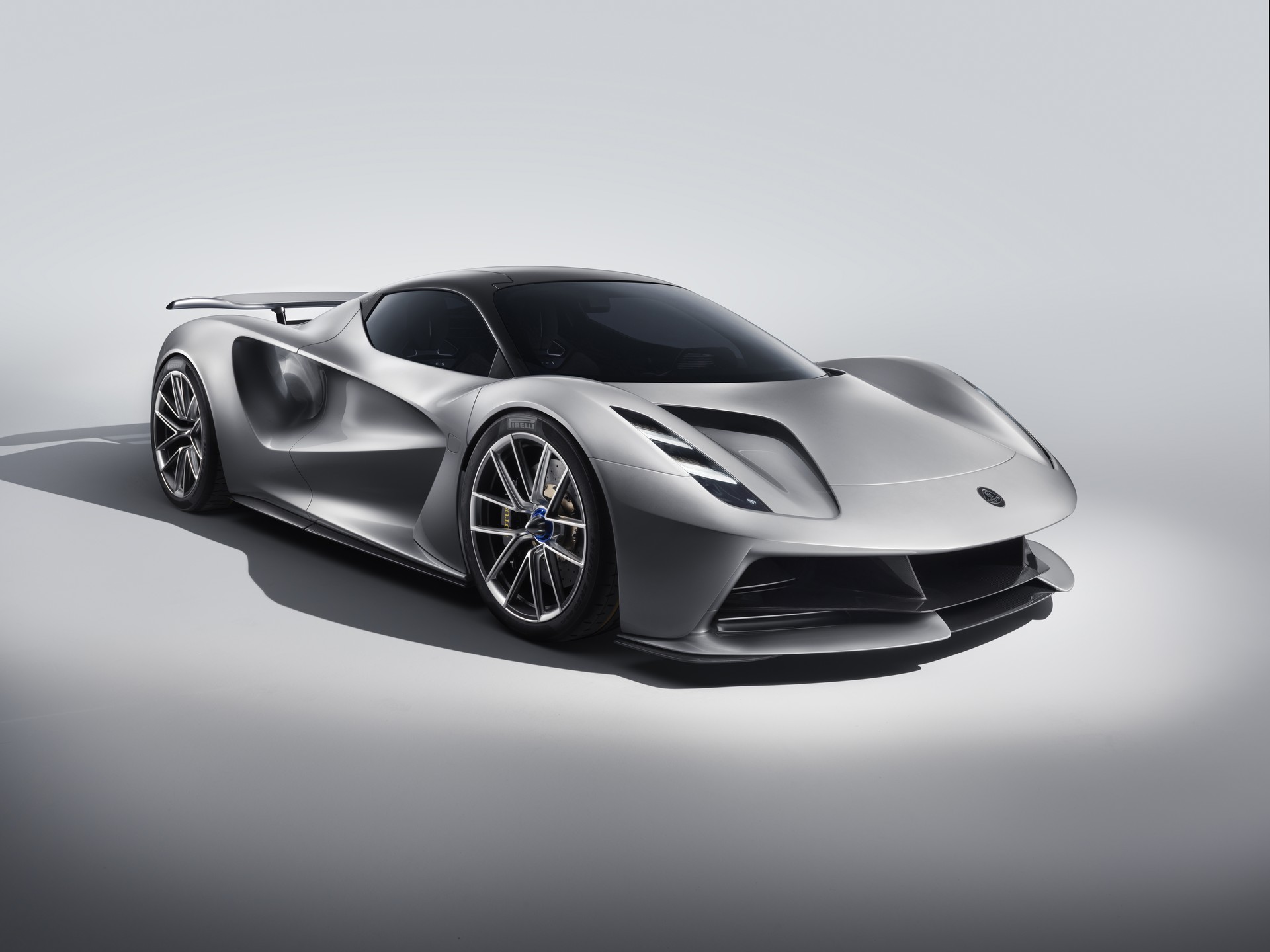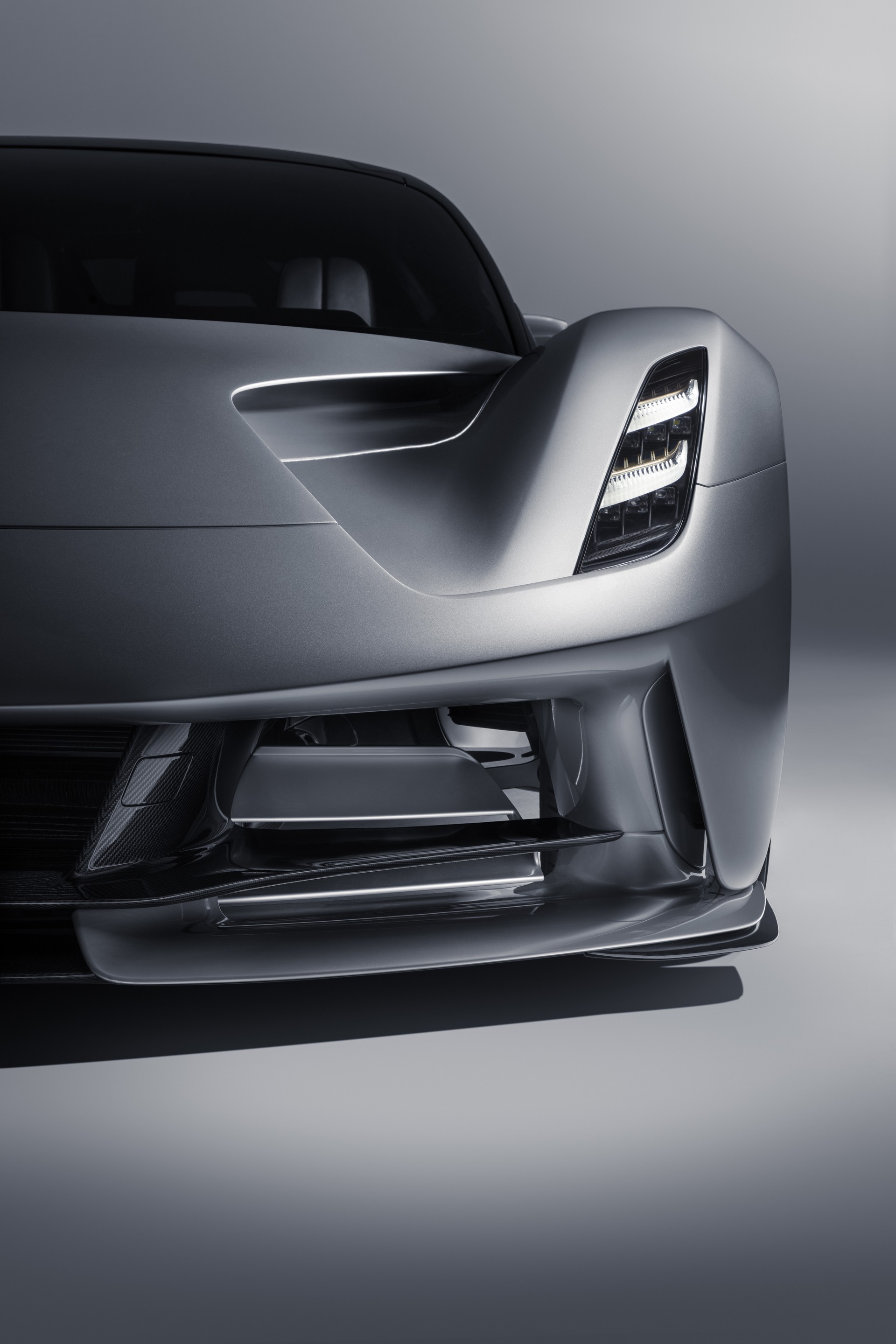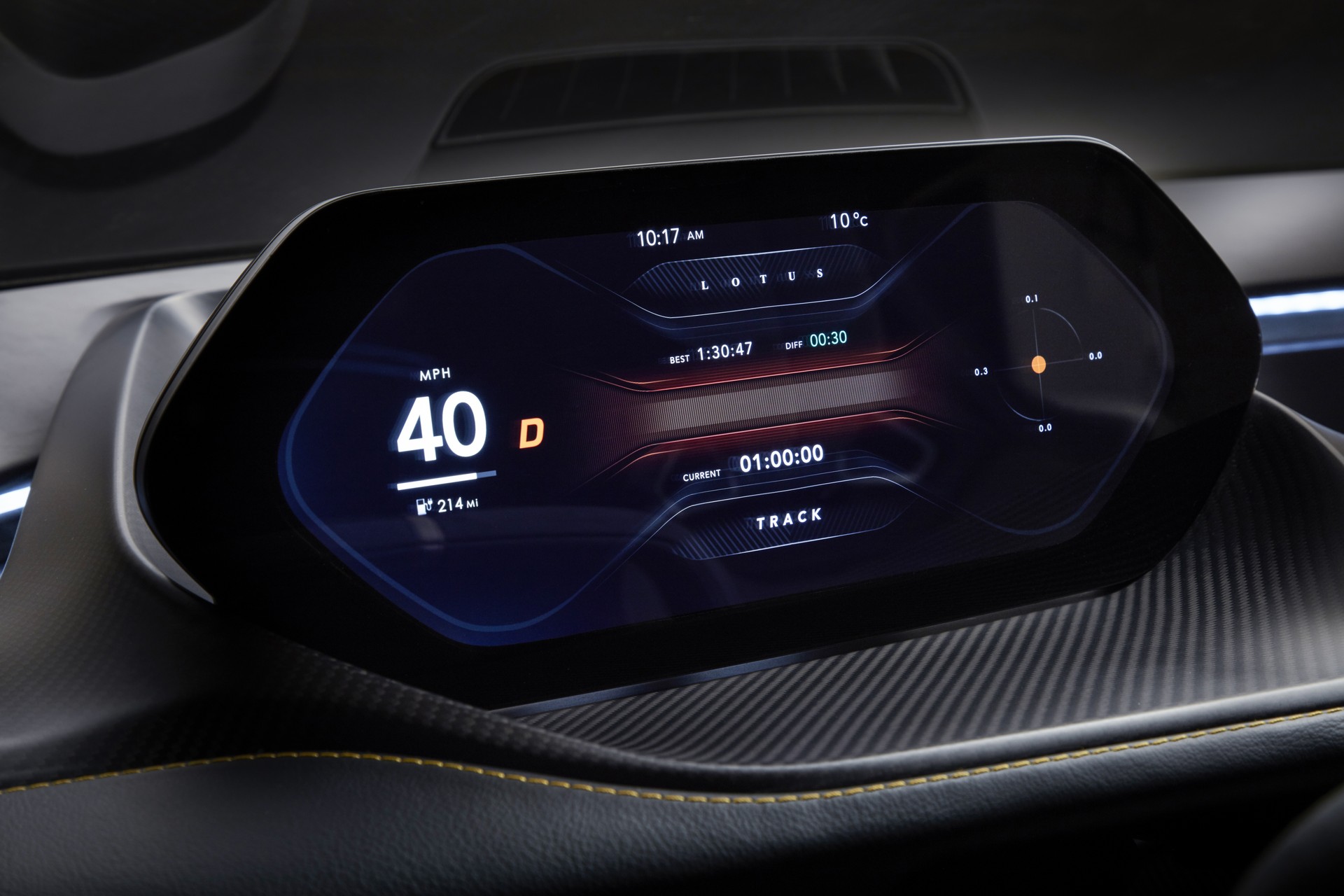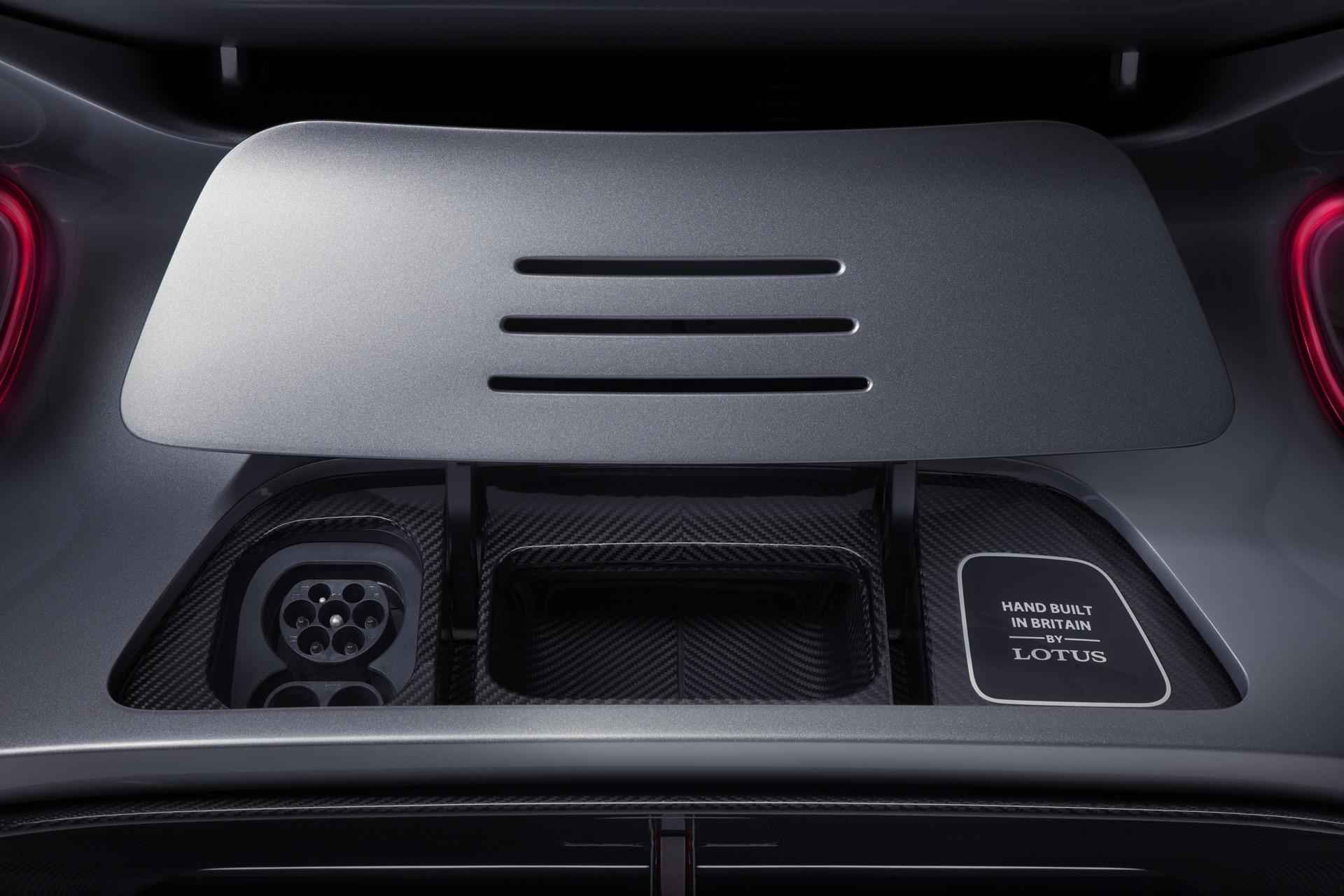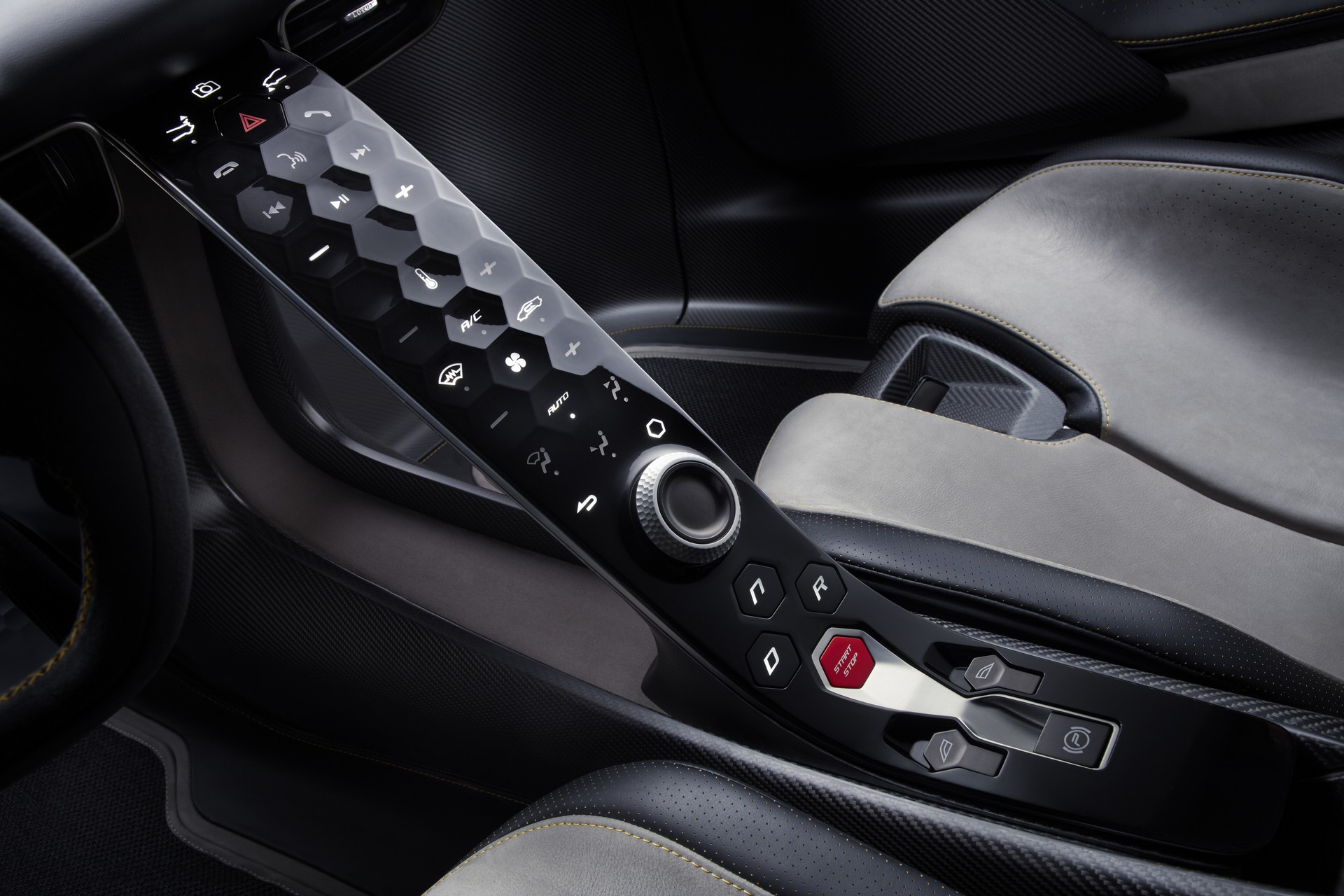Following a teaser earlier this month, Lotus has officially unveiled the new Evija.
Set to become the world’s “most powerful series production road car,” the Evija has four electric motors which are targeted to produce a combined output of 1,973 hp (1471 kW / 2,000 PS) and 1,254 lb-ft (1,700 Nm) of torque. Lotus says this should enable the hypercar to accelerate from 0-62 mph (0-100 km/h) in less than three seconds. Given enough room, the model will be able to hit a top speed in excess of 200 mph (320 km/h).
The electric motors are powered by a mid-mounted lithium-ion battery pack which should allow the car to travel up to 250 miles (400 km) on a single charge. When it’s depleted, owners will be happy to know the model has the “world’s fastest charging battery.” It can accept an 800 kW charge, even though charging units with that capability aren’t commercially available yet. However when they are, the Evija can be fully recharged in just nine minutes.
As it currently stands, the fastest available charger has a capacity of 350 kW. Using one of these will enable the Evija to have an 80% charge in 12 minutes and a full charge in 18 minutes.
Part of the Evija’s impressive performance is due to its ultra-lightweight carbon fiber monocoque chassis. It features a one-piece design – a first for Lotus – and it weighs 284 lbs (129 kg). This should help to enable the lightest version of the hypercar to tip the scales at just 3,704 lbs (1,680 kg).
The good news doesn’t stop there as Lotus says the car was designed to deliver an “optimum blend of extreme track performance and on-road comfort.” As part of this mission, the car has been equipped with a “motorsport-derived” suspension which features three adaptive spool-valve dampers for each axle. The model also has 20- and 21-inch magnesium wheels that are wrapped in Pirelli Trofeo R tires. They are backed up by a forged aluminum AP Racing braking system with carbon ceramic discs.
While electric vehicles aren’t ideal for the track, Lotus says the Evija has been equipped with four-radiators that help to keep the battery pack at an optimum temperature. As a result, the car can be “driven flat out, with no derate, for at least seven minutes in Track mode.”
A Bold New Look For Lotus
Looking like nothing else in the Lotus lineup, the Evija “signals the start of a contemporary new design language” for the company. The front end is dominated by a bi-plane front splitter, bulging fenders and slender headlights. The latter were created by Osram and Lotus says they are the first to use laser lights for both the main and dipped beams.
Moving further back, we can see a rakish windscreen and flowing carbon fiber bodywork. Side mirrors are notably absent as they have been replaced by cameras which automatically deploy when the vehicle is unlocked. Images from the cameras – including one built into the roof – are shown on three different screens in the cabin.
Given the car’s mission, it’s not surprising that the Evija has been equipped with active aerodynamics. They include an active rear spoiler and a F1-style Drag Reduction System. The model also has Venturi tunnels that optimize air flow by directing it through the bodyshell.
Other notable highlights include a massive rear diffuser and unique LED taillights that were inspired by the afterburners used on fighter jets. There’s also a hidden rear charging port and an illuminated rear Lotus logo that acts as a reversing light.
Once owners open the dihedral doors, they’ll be greeted by a futuristic cabin with visible carbon fiber and a ‘floating wing’ dashboard. They’ll also find a digital instrument cluster and an Alcantara-wrapped steering wheel with controls for everything from the turn signals to the drive mode selector.
One of the car’s more interesting features is the “ski slope-style” center console. The slender unit ramps up to connect to the dashboard and it features touch-sensitive haptic feedback buttons that are tucked into hexagonal recesses.
Drivers will also find carbon fiber shelled seats which are covered in Alcantara upholstery. Three-point seatbelts are standard, but four-point harnesses are optional.
Like other ultra exclusive models, the Evija promises an “unparalleled level of personalization.” Besides the usual custom paint and interior trim, the company will allow for custom Marquetry-style badging. As they explained, employees can “inlay metal elements directly into the carbon fiber bodyshell, so that the badge sits completely flush with the bodywork.”
Production will be limited to 130 units and the company is currently accepting orders with a £250,000 ($310,177 / €276,718) deposit. The first models will be built next year and each will cost £1.7 ($2.1 / €1.9) million.




